The LEBIT ion beam cooler and buncher is a two-stage linear Paul trap system designed to fully accept the DC beam from the gas stopping facility, and local ion sources, and convert it into low-energy pulsed beams occupying the smallest phase-space possible.
The systems main components are a cooler and a trap section, linked by a "micro"-RFQ. The cooler section is used to dissipate the ions’ transverse energy and most of their axial energy, and is operated at a pressure of pHe=5x10-2 mbar. The trap section is where ions are accumulated in a lower pressure environment (pHe=5x10-4 mbar) and from where they are ejected as ion pulses. In the schematic below, ions are injected from the left.
The systems main components are a cooler and a trap section, linked by a "micro"-RFQ. The cooler section is used to dissipate the ions’ transverse energy and most of their axial energy, and is operated at a pressure of pHe=5x10-2 mbar. The trap section is where ions are accumulated in a lower pressure environment (pHe=5x10-4 mbar) and from where they are ejected as ion pulses. In the schematic below, ions are injected from the left.
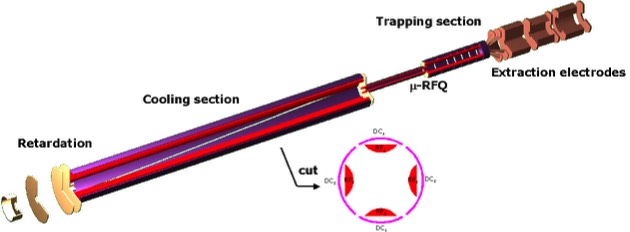
The separation of the ion accumulator into a cooling and a trapping stage is to avoid reheating of the ions during the ejection process. The cooler and the trap sections are connected by a micro-RFQ-guide which allows for differential pumping to maintain a relative pressure drop of about 100.
Both the cooler section and the micro-RFQ-guide make use of wedge-type cylindrical DC electrodes that provide an approximately constant axial drift field (see insert). The trap section is made of seven ring electrodes encompassing the RFQ rods and two acceleration electrodes that allow to shape proper trapping and ejection potentials.
Both the cooler section and the trap section have been designed for cryogenic cooling with LN2 (liquid nitrogen). Besides an increase of the acceptance of the system, and a decrease of the cooling time, this significantly reduces the emittance of the resulting ion pulse compared to an operation at room temperature.
Both the cooler section and the micro-RFQ-guide make use of wedge-type cylindrical DC electrodes that provide an approximately constant axial drift field (see insert). The trap section is made of seven ring electrodes encompassing the RFQ rods and two acceleration electrodes that allow to shape proper trapping and ejection potentials.
Both the cooler section and the trap section have been designed for cryogenic cooling with LN2 (liquid nitrogen). Besides an increase of the acceptance of the system, and a decrease of the cooling time, this significantly reduces the emittance of the resulting ion pulse compared to an operation at room temperature.
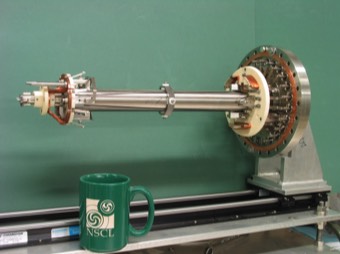
The cooler section with attached micro-RFQ .
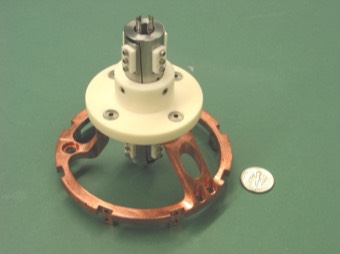
The micro-RFQ with a dime for scale.
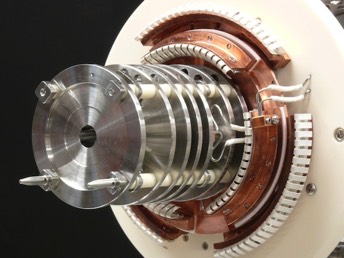
Close up of the buncher section.
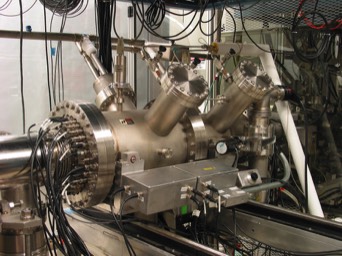
Assembled system in vacuum chambers.